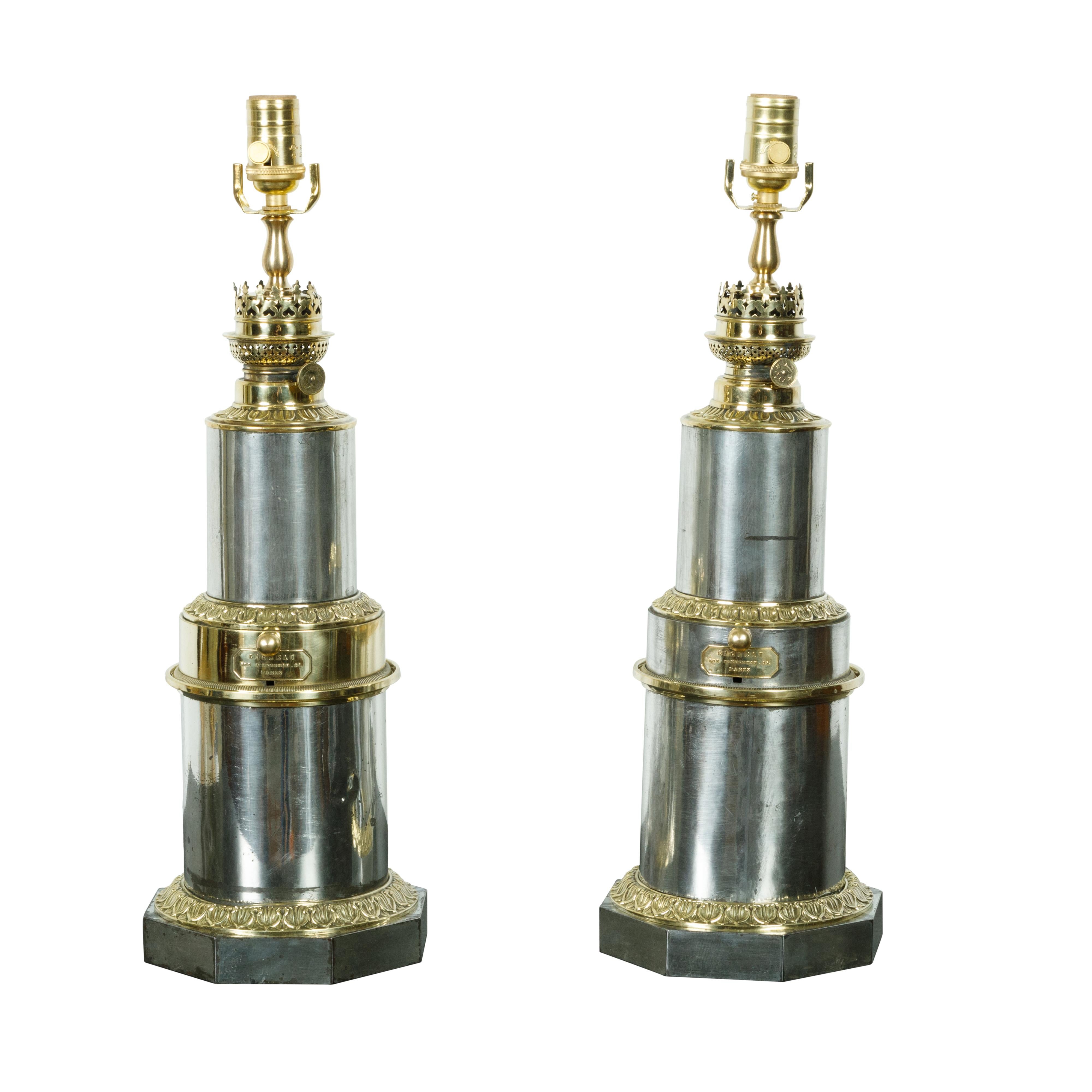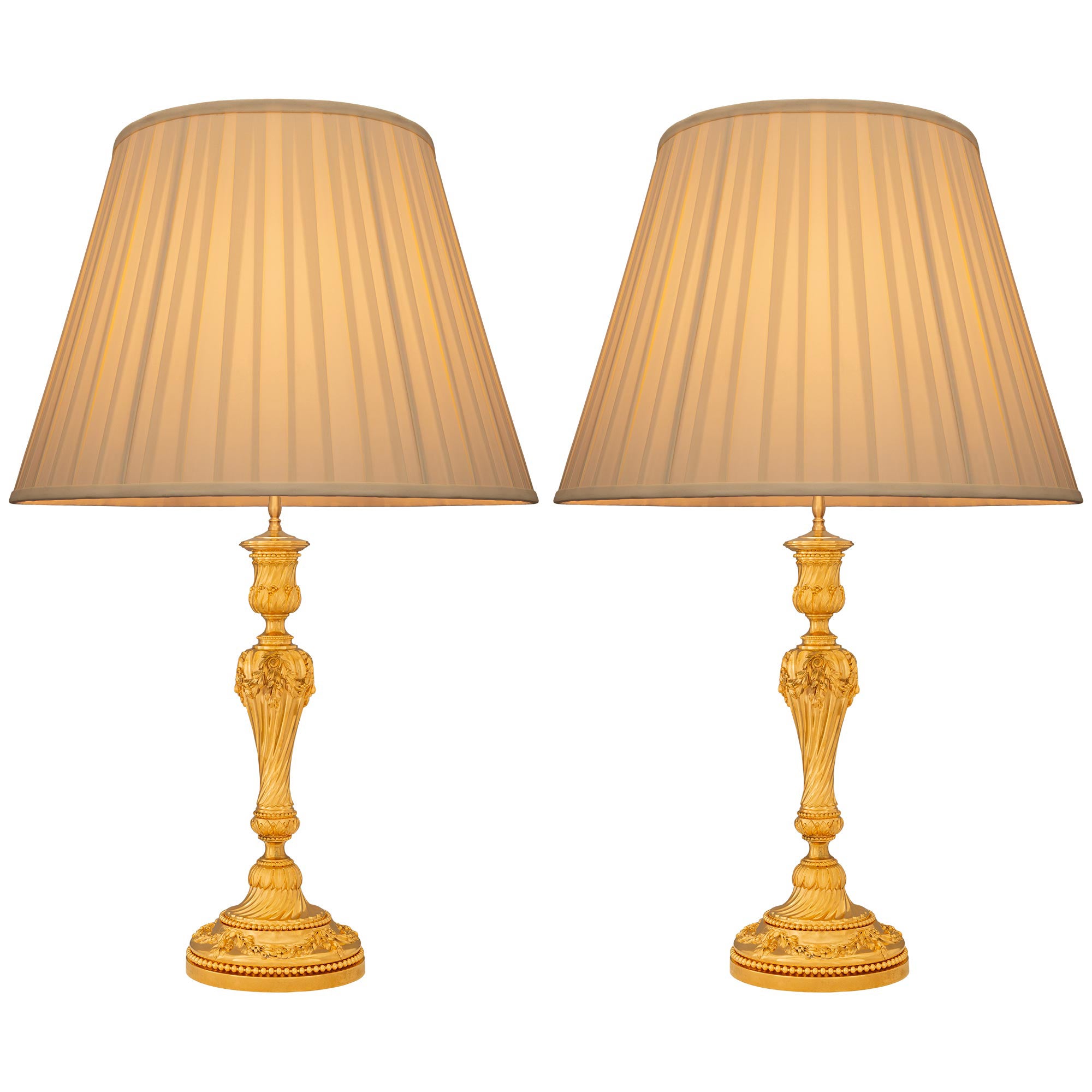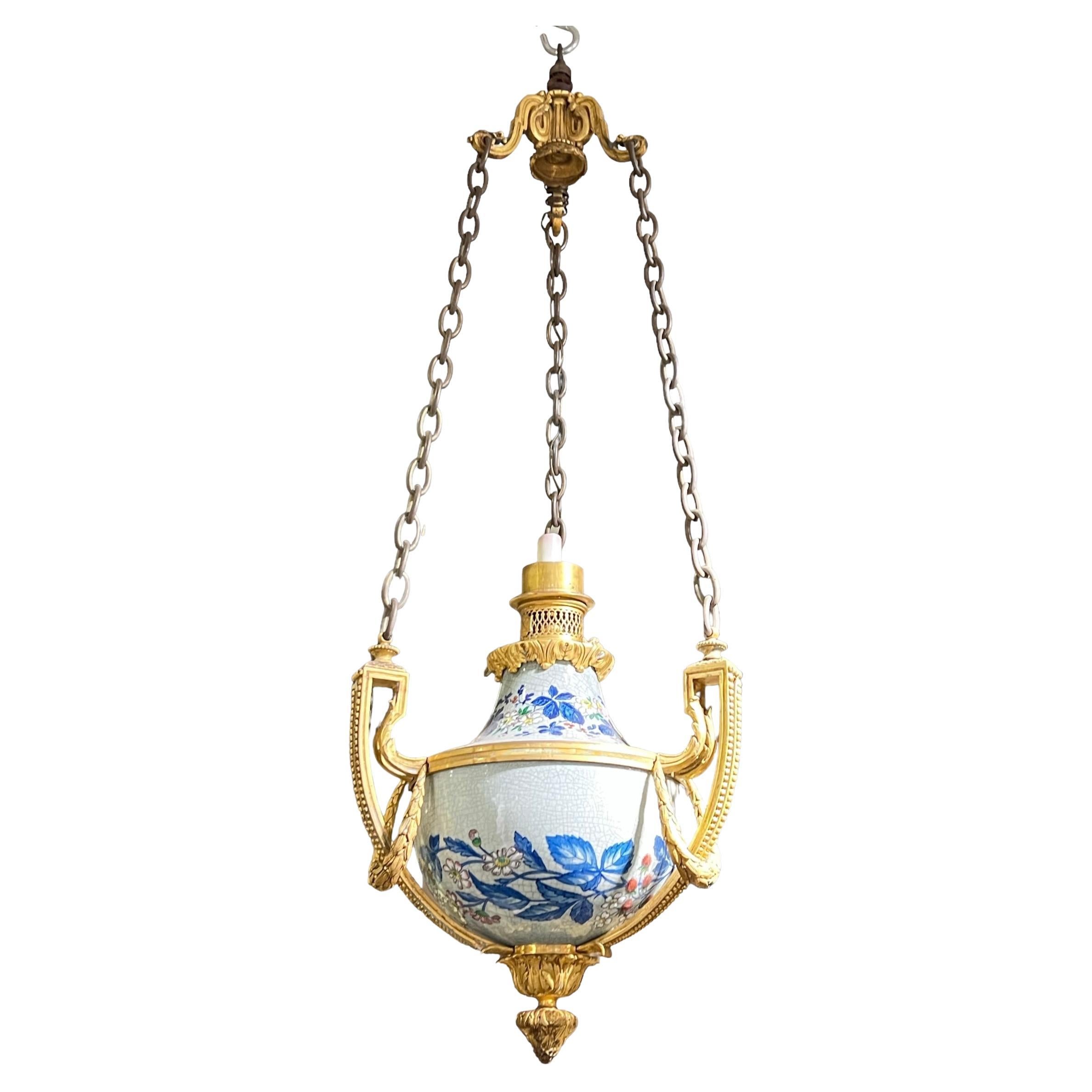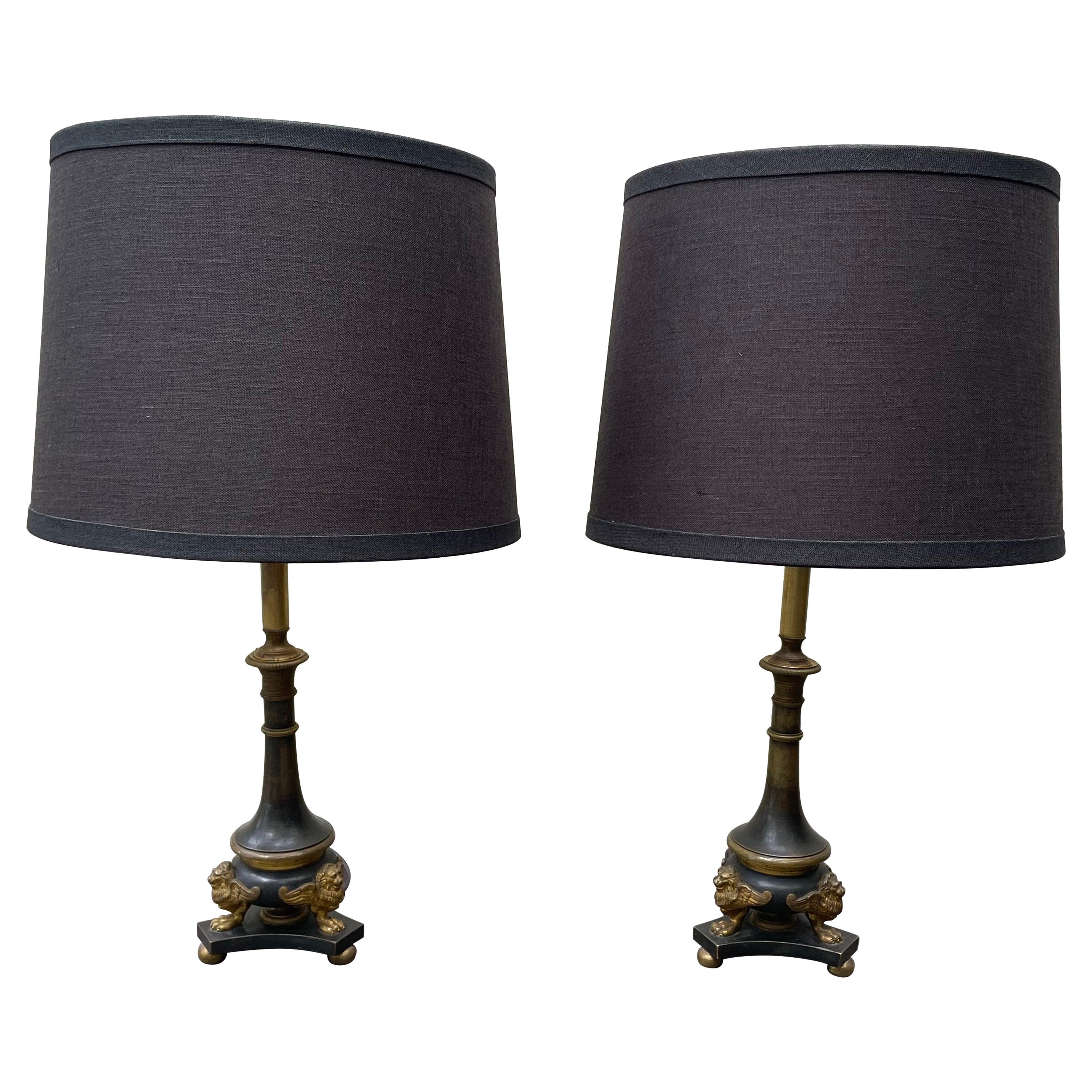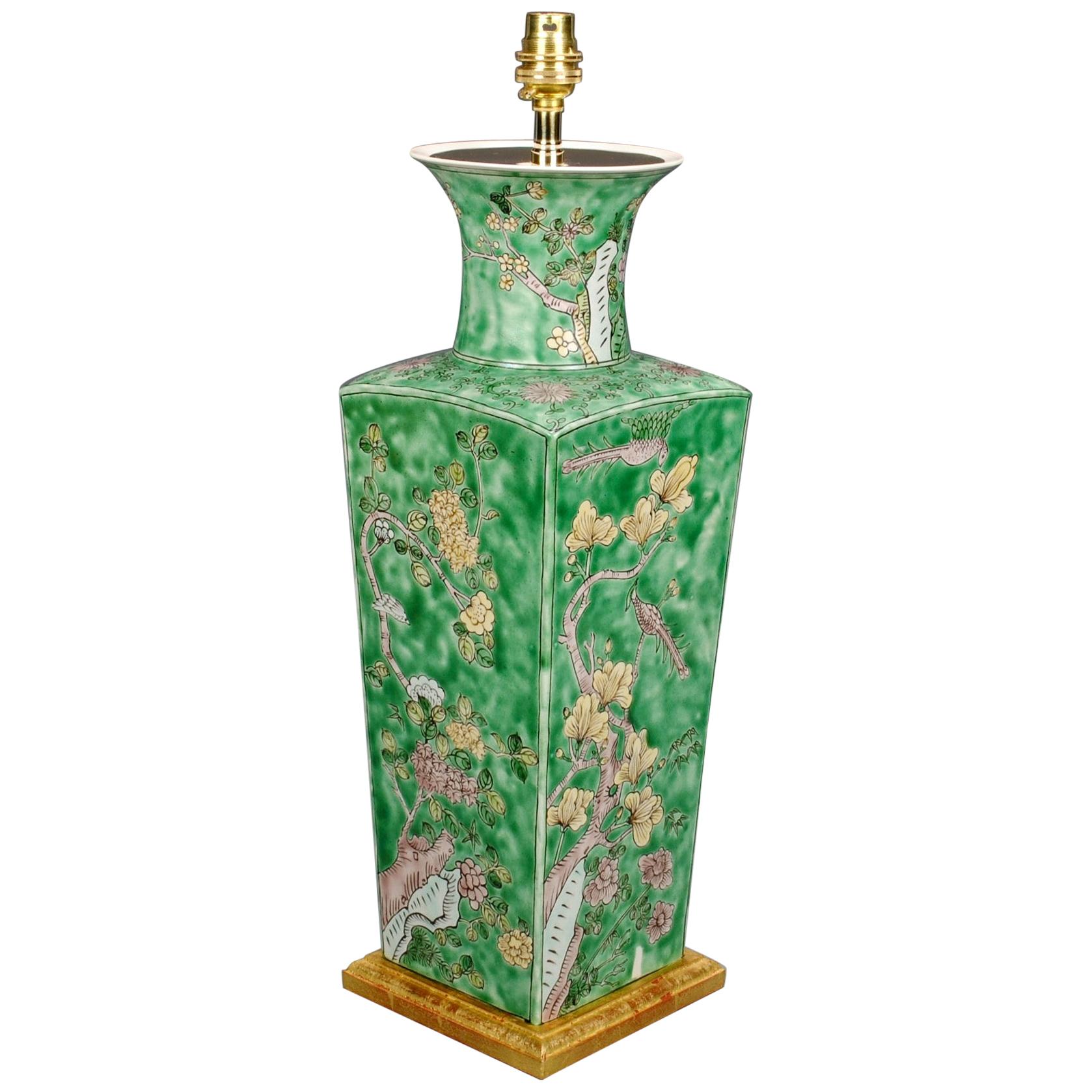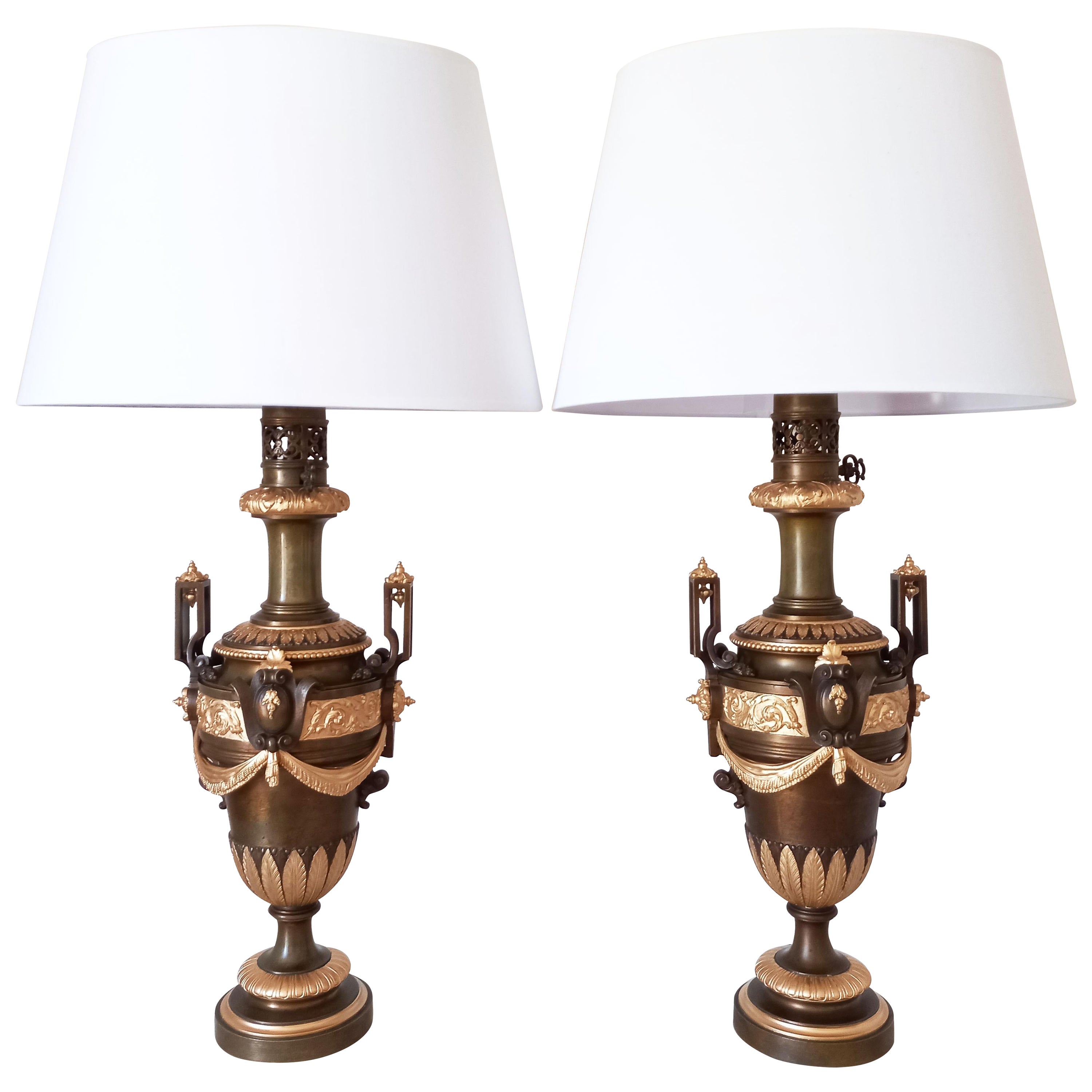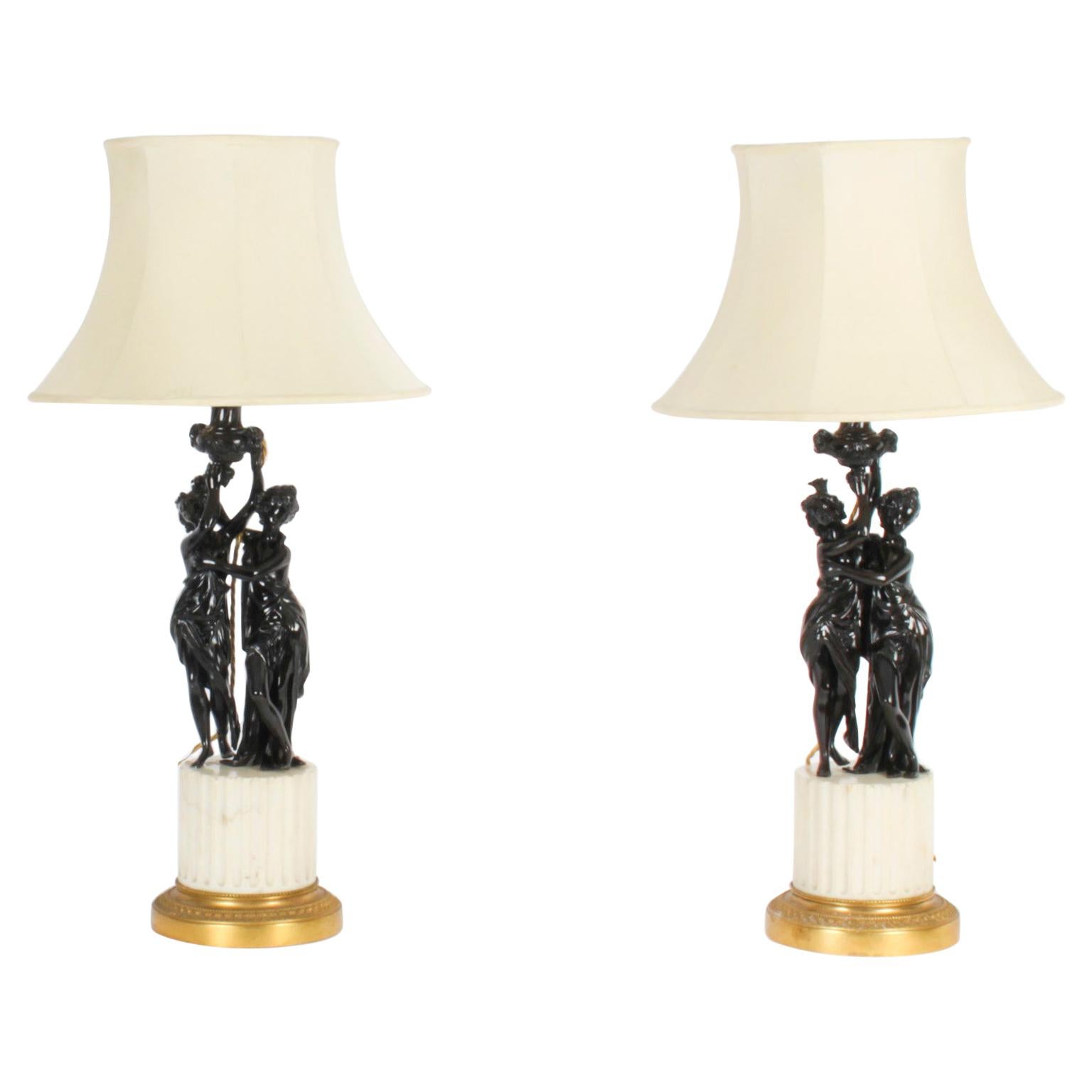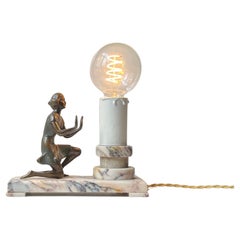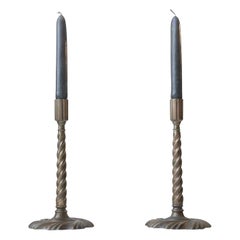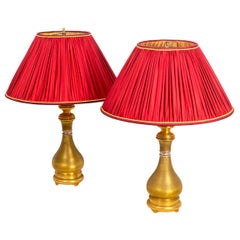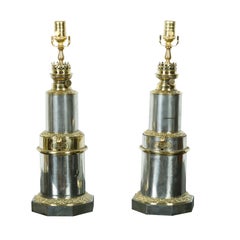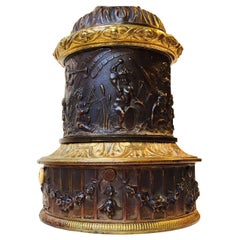
Gagneau of Paris, Antique French Table Lamp in Bronze, 19th Century
View Similar Items
Want more images or videos?
Request additional images or videos from the seller
1 of 11
Gagneau of Paris, Antique French Table Lamp in Bronze, 19th Century
About the Item
- Creator:Gagneau Paris (Maker)
- Dimensions:Height: 18.12 in (46 cm)Diameter: 7.09 in (18 cm)
- Style:Baroque Revival (Of the Period)
- Materials and Techniques:
- Place of Origin:
- Period:
- Date of Manufacture:1880s-1890s
- Condition:Wear consistent with age and use. Minor fading. Original condition with light ware and patina consistent with its age.
- Seller Location:Esbjerg, DK
- Reference Number:1stDibs: LU1782221635952
About the Seller
4.9
Platinum Seller
These expertly vetted sellers are 1stDibs' most experienced sellers and are rated highest by our customers.
Established in 2010
1stDibs seller since 2016
1,097 sales on 1stDibs
Typical response time: 1 hour
More From This SellerView All
- Antique Piano or Table Lamp in Bronze & Blue Glass, 1920sLocated in Esbjerg, DKA beautifully crafted and detailed Table, Piano or Mantle Lamp. Distinct Art Nouveau styling. Its pivoting and fully adjustable. Made from patinated 'embos...Category
Vintage 1920s European Art Nouveau Table Lamps
MaterialsBronze
$618 Sale Price25% Off - Figural French Art Deco Table Lamp in Bronze & Marble, 1930sLocated in Esbjerg, DKOrnate figural table light featuring architecturally set onyx marble base, stylized faux candle and a bronze sculpture/figurine warming her hands at the burning 'light'. It was made ...Category
Vintage 1930s French Art Deco Table Lamps
MaterialsMarble, Bronze
- Gothic Twisted Column Candlesticks in Bronze, 19th Century, Set of 2Located in Esbjerg, DKA pair of Barley twisted candlesticks in patinated bronze. Made in Scandinavia or England circa 1850-1880. Great authentic Gothic/Got...Category
Antique 19th Century European Gothic Revival Candlesticks
MaterialsBronze
$474 Sale Price / set25% Off - Antique Russian Wall Relief, Icon in Bronze, 19th CenturyLocated in Esbjerg, DKSmall yet heavy wall relief - Russian icon in cast bronze. It depicts a seated Virgin Mary holding a very young Jesus and an Angel holding a crucifix. It w...Category
Antique 19th Century Russian Victorian Religious Items
MaterialsBronze
$309 Sale Price25% Off - Italian Art Deco Style Table Lamp in Bronze, 1980sLocated in Esbjerg, DKA stylish table lamp in patinated bronze set with a spherical shade in white opaline glass. It was made in Italy during the 1980s closely 'micmic'ing' the style of the 1920s/1930s Ar...Category
Vintage 1980s Italian Art Deco Table Lamps
MaterialsBronze
$573 Sale Price25% Off - Scandinavian Art Deco Table Lamp in Green Bronze & Opaline GlassLocated in Esbjerg, DKA well made possibly up-cycled table lamp made from green verdigris bronze and installed with a spherical white opaline glass shade. This small table light features a 1930s socket in...Category
Vintage 1930s Scandinavian Art Deco Table Lamps
MaterialsBronze
$408 Sale Price25% Off
You May Also Like
- Maison Gagneau, Pair of Lamp in Guilloche Gilt Brass, Late 19th CenturyBy Gagneau ParisLocated in Saint-Ouen, FRMaison Gagneau, signed. Pair of baluster shape lamps in guilloche gilt brass. They stand on a circular base. The collar is circled with a silvered ring...Category
Antique 1880s European Table Lamps
MaterialsBrass
- Pair of Porcelain Vases Ormolu-Mounted in Lamps by Gagneau Paris XIXth CenturyBy Gagneau ParisLocated in Saint-Ouen, FRPair of large Japanese Porcelain Cone Shape Vases with Imari decoration Important mounts in ormolu and gilded metal, the base decorated with a laurel wreath, the upper part of falling leaves and a frieze of knotted ribbon. The mounts signed Gagneau, 115 R. Lafayette. Circa 1860 With their original aluminium bulb cover and original gilding Vase it self Height 47 cm The Gagneau Company is one of the most famous lighting factories in Paris in the nine-teenth century, established in 1800 at 25 rue d'Enghien in Paris and later at 115 rue de Lafayette. She has participated in many exhibitions throughout this century. She began in 1819 with the Exposition des Produits de l'Industrie and later participated in the Universal Exhibitions where she was part of the jury in the category of art bronzes (class 25) at the Universal Exhibition in Paris in 1889. "Imari" was simply the trans-shipment port for Arita wares, from where they went to the for-eign trading outposts at Nagasaki. It was the kilns at Arita which formed the heart of the Japanese porcelain industry. Arita's kilns were set up in the 17th century, after kaolin was discovered in 1616. A popular legend attributes the discovery to an immigrant Korean potter, Yi Sam-Pyeong (1579–1655), although most historians consider this doubtful. After the discovery, some kilns began to produce revised Korean-style blue and white porcelains, known as Early Imari, or "Shoki-Imari". In the mid-17th century, there were also many Chinese refugees in northern Kyushu due to the turmoil in China, and it is said that one of them brought the overglaze enamel coloring technique to Arita. Thus Shoki-Imari developed into Ko-Kutani, Imari, and later Kakiemon, which are sometimes taken as a wider group of Imari wares. Ko-Kutani was produced around 1650 for both export and domestic market.Kutani Ware is characterized by vivid green, blue, purple, yellow and red colors in bold designs of landscapes and nature. Blue and white porcelain pieces continued to be produced and they are called Ai-Kutani. Ko-Kutani Imari for the export market usually adopted Chinese design structure such as kraak style, whereas Ai-Kutani for the domestic market were highly unique in design and are ac-cordingly valued very much among collectors. Ko-Kutani style evolved into Kakiemon-style Imari, which was produced for about 50 years around 1700. Kakiemon was characterized by crisp lines, and bright blue, red and green designs of dramatically stylized floral and bird scenes. Imari achieved its technical and aes-thetic peak in the Kakiemon style, and it dominated the European market. Blue and white Kakiemon is called Ai-Kakiemon. The Kakiemon style transformed into Kinrande in the 18th century, using underglaze blue and overglaze red and gold enamels, and later additional colors. Imari began to be exported to Europe when the Chinese kilns at Jingdezhen were damaged in the political chaos and the new Qing dynasty government halted trade in 1656–1684. Ex-ports to Europe were made through the Dutch East India Company, and in Europe the des-ignation "Imari porcelain" connotes Arita wares of mostly Kinrande Imari. Export of Imari to Europe stopped in mid-18th century when China resumed export to Europe, since Imari was not able to compete against Chinese products due to high labor costs. By that time, however, both Imari and Kakiemon styles were already so popular among Eu-ropeans that the Chinese export porcelain copied both, a type known as Chinese Imari. At the same time, European kilns, such as Meissen and English potteries such as Johnson Bros. and (Royal) Crown Derby, also imitated the Imari and Kakiemon styles. Export of Imari surged again in late 19th century (Meiji era) when Japonism flourished in Europe.Thus, in the western world today, two kinds of true Japanese Imari can...Category
Antique 1880s French Japonisme Table Lamps
MaterialsBronze
- Pair of French 1920s Gagneau Paris Steel and Brass Table Lamps with WaterleavesBy Gagneau ParisLocated in Atlanta, GAA pair of French Gagneau Paris steel and brass table lamps from the early 20th century with waterleaf motifs. Created in France during the first quarter of the 20th century, each of ...Category
Early 20th Century French Table Lamps
MaterialsBrass, Steel
- Pair Of French 19th Century Louis XVI St. Ormolu Lamps, Signed Gagneau ParisLocated in West Palm Beach, FLA stunning and wonderfully detailed pair of French 19th century Louis XVI st. Ormolu lamps, signed Gagneau Paris. Each lamp is raised by a circular pedestal with a beaded edge. Above...Category
Antique 19th Century French Louis XVI Table Lamps
MaterialsOrmolu
- 19th Century French Bronze and Pottery Hanging Oil Lamp by GagneauBy Gagneau ParisLocated in New York, NYUnique 19th century hanging oil lamp by Gagneau and Company of Paris, with urn form crafted from faience with blue, red and pink flowers and leaves on a cream colored ground, with ne...Category
Antique Late 19th Century French Chandeliers and Pendants
MaterialsBronze
- Pair of Small Scale Bronze Table Lamps, Late 19th Century, FrenchBy Maison JansenLocated in Bedford Hills, NYStunning pair of French bronze small scale table lamps. Assembled with modern elements and shades, these vintage lamps make striking fixtures for a bedroom, library or study. Profess...Category
Antique Late 19th Century French Baroque Revival Table Lamps
MaterialsBronze
Recently Viewed
View AllMore Ways To Browse
French Paris
Century Maker
Antique French Tables
Antique French Table
French Antique Tables
French Antique Table
French Table Antique
Antique In Paris
19th Century French Table Lamp
Gilded Baroque
French Antique Table White
Antique Gold Table Lamps
Plated Lamp Bronze
French Gold Antiques Dining Table
Antique Bronze Cast Table
Antique Table Lamp Gilt
Gilded Bronze Lamps
French Baroque Table


